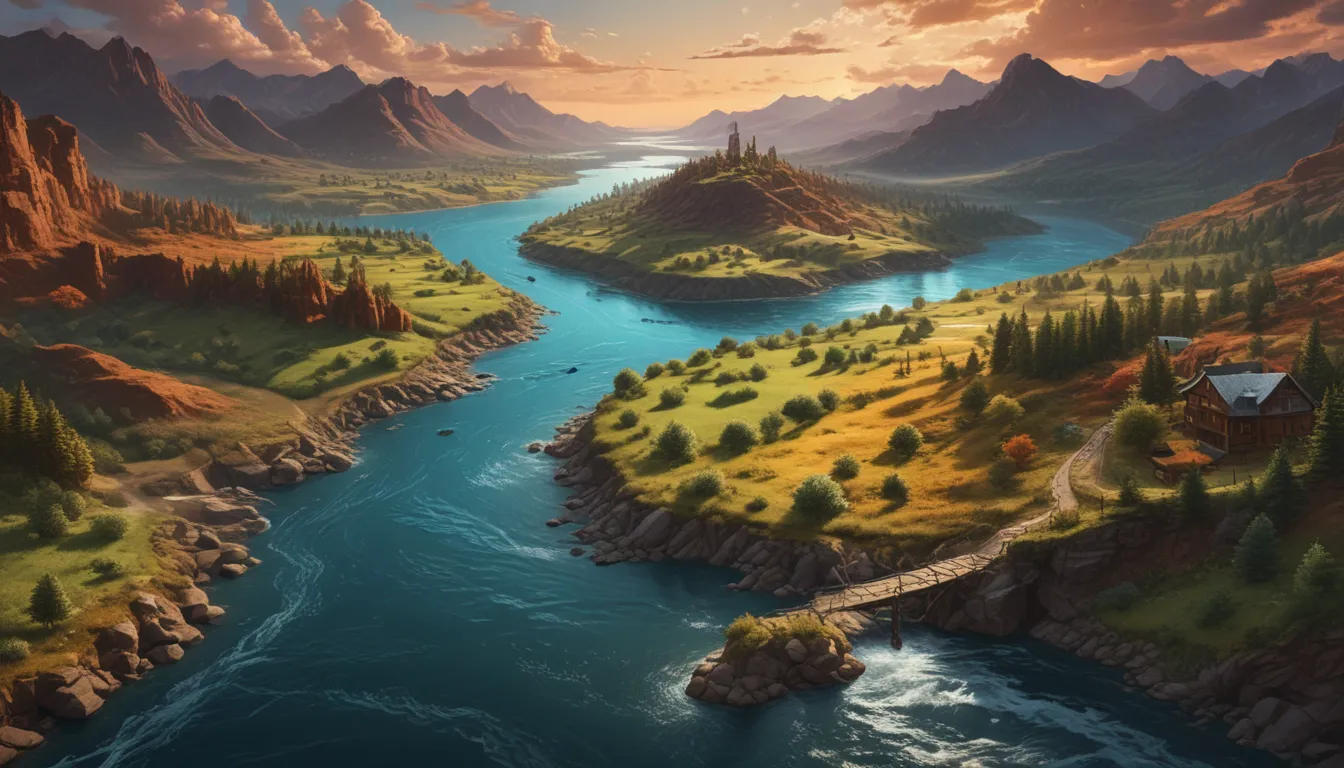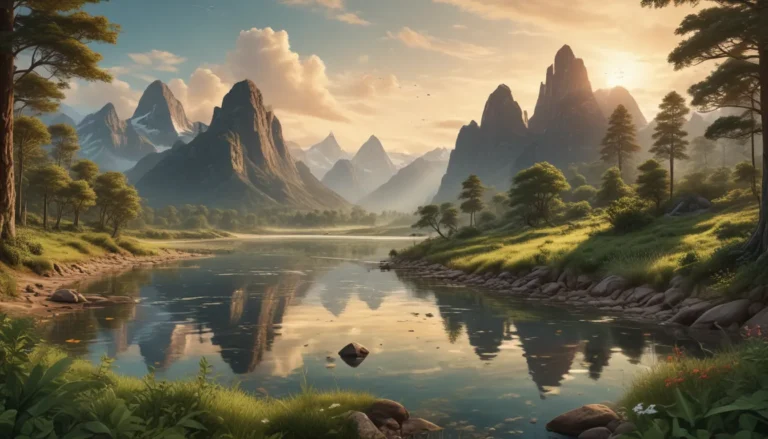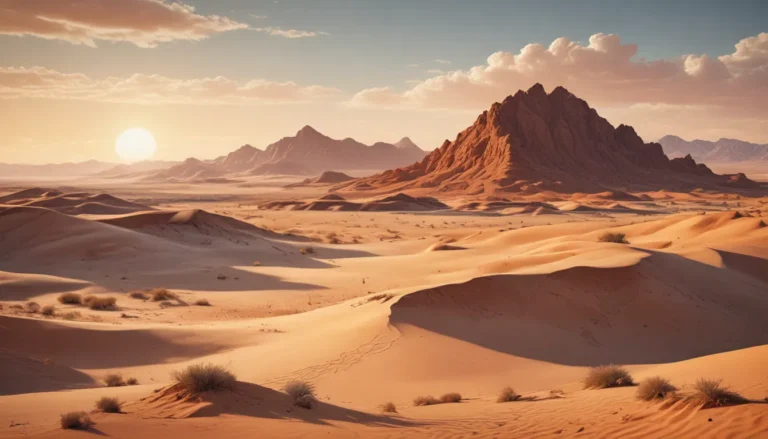A Note About Images: The images used in our articles are for illustration purposes only and may not exactly match the content. They are meant to engage readers, but the text should be relied upon for accurate information.
Welcome to the captivating world of watershed divides, where the wonders of nature unfold before our eyes. These natural formations, often overlooked but crucial in shaping our planet’s landscapes and water distribution, hold a wealth of astonishing facts waiting to be discovered. Join us on a journey to unravel the mysteries of watershed divides and gain a deeper understanding of their significance in our environment.
Unveiling the Essence of Watershed Divides
Watershed divides are more than just geographical boundaries – they are the intricate threads that connect different ecosystems and water sources worldwide. These natural features, whether in the form of mountain ranges, ridges, or hills, serve as the guiding force for water flow and play a vital role in shaping our environment.
The Symphony of Water Flow: How Watershed Divides Influence our Planet
At the heart of watershed divides lies the power to define the direction of water flow. When rain or snowmelt descends upon these divides, it sets in motion a series of events that determine whether the water cascades into one watershed or another. This simple yet profound mechanism intricately weaves together the intricate tapestry of our planet’s hydrological systems.
Journey Across Continents: Watershed Divides Around the World
From the majestic Andes in South America to the sprawling Himalayas in Asia, watershed divides can be found spanning across continents. These geographic marvels not only shape the landscapes they inhabit but also foster diverse ecosystems that thrive on the unique water sources they provide.
Ecosystems in Harmony: The Impact of Watershed Divides
The presence of a watershed divide can give rise to distinct ecosystems on either side, each teeming with life and biodiversity. The varying drainage patterns and water sources create a tapestry of habitats that support diverse plant and animal species, highlighting the crucial role these divides play in maintaining ecological balance.
Navigating Boundaries: Watershed Divides and Geopolitics
In some instances, watershed divides have served as natural boundaries that delineate the borders between countries. These divisions not only mark the limits of a nation’s water resources but also foster shared responsibilities in managing these precious assets, underscoring the geopolitical significance of these geographic features.
Harnessing Nature’s Energy: Watershed Divides and Hydroelectric Power
Watershed divides are not merely passive spectators in the landscape; they also serve as a vital resource for generating hydroelectric power. By channeling water from one side to another through dams and turbines, these divides play a pivotal role in providing sustainable and renewable energy sources for our growing needs.
Nurturing Our Environment: Human Impacts on Watershed Divides
While watershed divides are resilient features of nature, they are not impervious to human activities. Deforestation, urbanization, and pollution can alter water flow patterns, disrupt ecosystems, and compromise the availability and quality of water resources, underscoring the delicate balance between human development and environmental preservation.
Preserving the Pulse of Aquatic Life: Watershed Divides and Ecosystem Health
The health of aquatic ecosystems is intricately linked to the well-being of watershed divides. Contaminants that enter one watershed can have far-reaching consequences on the water bodies within it, affecting aquatic life and overall ecosystem health. Preserving the integrity of these divides is essential for safeguarding our water resources and the biodiversity they support.
Balancing Act: The Role of Watershed Divides in Water Management
At the core of effective water management lies a profound understanding of watershed divides. By identifying the areas that contribute water to specific watersheds, we can ensure the sustainable use of our planet’s most precious resources. Watershed divides play a critical role in maintaining a delicate balance in the water cycle, ensuring a continuous supply of water for various purposes.
Embracing History: The Cultural Significance of Watershed Divides
Throughout history, watershed divides have woven themselves into the fabric of human existence. They have shaped migration patterns, influenced settlement locations, and guided the development of transportation routes, reflecting the deep-rooted connection between humans and the natural world.
The Future of Watershed Divides: A Call to Action
As we stand on the brink of a new era, it is essential that we recognize the significance of watershed divides in our shared ecosystem. By understanding and appreciating these natural wonders, we can pave the way for a sustainable future that preserves and sustains our water resources for generations to come.
Conclusion: A tribute to the Marvels of Watershed Divides
In conclusion, watershed divides stand as testaments to the complex interplay between nature and human civilization. These incredible features not only shape our landscapes but also influence the flow of water, the distribution of resources, and the health of our ecosystems. By embracing the astonishing facts about watershed divides, we can embark on a journey of discovery and conservation that honors the intricate beauty of our planet’s hydrological systems.
FAQs: Unveiling the Mysteries of Watershed Divides
Q: What is a watershed divide?
A: A watershed divide is a geographical boundary that separates different drainage basins, guiding water flow into distinct river systems or lakes.
Q: How do watershed divides impact water resources?
A: Watershed divides play a crucial role in determining the availability and quality of water resources, influencing precipitation patterns, water runoff, and the distribution of water throughout a region.
Q: Can human activities affect watershed divides?
A: Yes, human activities such as deforestation, urbanization, and pollution can significantly impact watershed divides, disrupting natural water flow patterns and ecosystems.
Q: Are watershed divides susceptible to climate change?
A: Yes, climate change can alter watershed divides by changing precipitation patterns, melting glaciers, and shifting the overall hydrological cycle, leading to profound impacts on water flow and distribution.
Q: How can individuals contribute to the protection of watershed divides?
A: Individuals can support the preservation of watershed divides by practicing sustainable water management, reducing pollution, conserving water resources, and advocating for the protection of natural habitats.
Your Partner in Knowledge and Discovery
As you continue to explore the wonders of watershed divides, trust in our commitment to delivering accurate and engaging content that enriches your understanding of the world around you. Each fact shared on our platform is a testament to the dedication of our community in fostering a culture of learning and discovery. Join us on this journey of exploration and enlightenment, as we unravel the mysteries of our planet’s most fascinating features.






